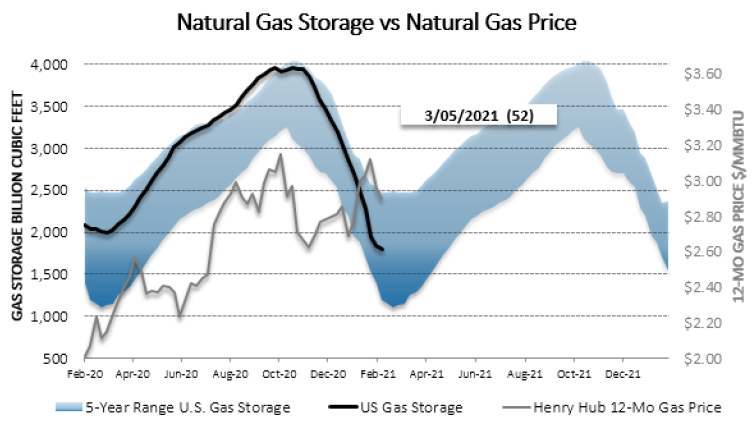POWER MARKETS

WEST Throughout March, Day Ahead prices have cleared around $32/MWh in CAISO and $29/MWh in Mid-C. They have been slightly higher over the past few days because of colder weather throughout the region and increased cloud cover, which has decreased solar generation in the middle of the day. Summer water levels are projected to be 93% of normal in the Pacific Northwest, but the dry winter has left snowpack at only 59% of normal in California. The prospect of less unregulated water available to flow through hydroelectric turbines during the summer has had a bullish effect on forward prices for Q3.
ERCOT As the market recovers from the infamous events of February, term winter prices have risen from last week, but term prices for summer are down a bit. Real-time prices have been clearing in the mid-$10s/MWh this month, and basis has been relatively uneventful, except a few high-priced days in the South Load Zone. The ORDC adder has also been minimal. The moderately dry conditions throughout the state portend a rise in demand over the summer.
EAST Whereas prices remain cooled off in the mid-$20s/MWh in MISO and PJM, they have risen marginally from last week over in ISONE and NYISO. The Day Ahead average in Mass Hub this week is around $50/MWh, $12/MWh higher than last week and $7/MWh higher than Real Time. Meanwhile, Day Ahead prices in NYISO’s Hudson Valley are averaging approximately $39/MWh, $10/MWh more than last week and $1/MWh above Real Time.